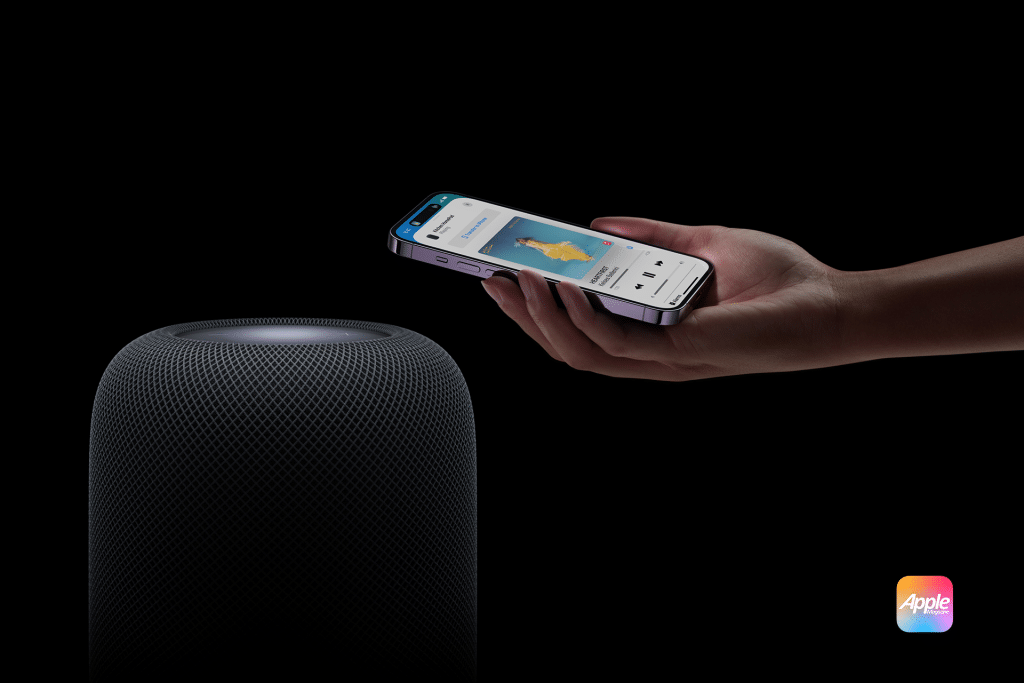Kuo, known for his sharp takes on Apple’s supply chain moves, pointed to software development as the bottleneck. The new HomePod isn’t just a speaker with a screen slapped on; it’s expected to pack a 6- to 7-inch display and an A18 chip—the same powerhouse driving the iPhone 16. This combo hints at a device ready to flex Apple Intelligence, the AI suite unveiled at WWDC 2024. But syncing that tech with a polished interface, likely tied to iOS 19 or a homeOS spin-off, has slowed things down. Apple recently confirmed that its next-gen Siri, a cornerstone of this project, won’t fully land until later in 2025, with some features slipping into 2026, per Bloomberg.
A Smart Home Game-Changer
So, what’s this HomePod aiming to do? Picture a square, iPad-like gadget—potentially wall-mountable or perched on a speaker base—that doubles as your smart home’s nerve center. Users could tap the screen to tweak lights, adjust thermostats, or lock doors, all without fumbling for an iPhone. Add FaceTime calls, room-to-room intercoms, and maybe even a security camera tie-in down the line, and you’ve got a hub that’s more than just background music. TechCrunch has tracked rumors of this shift, noting Apple’s eyeing a rival to Amazon’s Echo Show, but with Cupertino’s signature polish.
That A18 chip isn’t just for show, either. It’s the same silicon powering iPhone 16’s zippy performance, suggesting this HomePod could handle AI tasks—like a Siri that finally gets your drift—without breaking a sweat. For enthusiasts, it’s a tantalizing peek at Apple’s smart home ambitions, blending hardware muscle with software smarts. But the delay underscores a truth: Apple won’t ship until it’s ready, even if it means leaving fans waiting.
Why the Holdup?
Software’s the sticking point. Kuo’s update aligns with Bloomberg’s reporting that Apple’s personalized Siri overhaul—think contextual replies and deeper app integration—won’t hit prime time until 2026. The HomePod’s display needs an interface to match, possibly borrowing from visionOS’s clean, gesture-friendly design seen on the Vision Pro. Reuters has suggested Apple’s testing a lightweight homeOS, but whatever the flavor, it’s not cooked yet. This isn’t a shock—Apple’s known for delaying products (remember AirPower?) to avoid half-baked launches.
The stakes are high, too. The second-generation HomePod, relaunched in 2023, leaned hard into audio quality—crisp highs, rich bass—but didn’t move the needle on functionality. This screen-equipped model pivots toward utility, aiming to be a daily driver for tech-savvy households. The Verge reported last month that Apple’s prototyping various sizes, with 6 to 7 inches hitting the sweet spot—big enough for touch controls, small enough to fit your counter.
What’s Next?
With mass production slated for July-September 2025, a retail launch could land in late 2025—think holiday season—or spill into early 2026. WWDC in June might offer a teaser, especially if iOS 19 or a homeOS reveal ties in. For now, Apple’s lips are sealed, leaving room for speculation—but not here. We’re sticking to what’s confirmed: a delay, a powerful chip, and a screen that could rethink how you manage your home.
Why It Matters
This isn’t just another gadget drop. It’s Apple doubling down on a smart home market where it’s lagged behind Amazon and Google. A successful HomePod with a screen could pull users deeper into the ecosystem—your iPhone, Watch, and now your walls, all talking seamlessly. For casual readers, it’s a reason to keep an eye on Cupertino. For enthusiasts, it’s a promise of innovation worth the wait.
